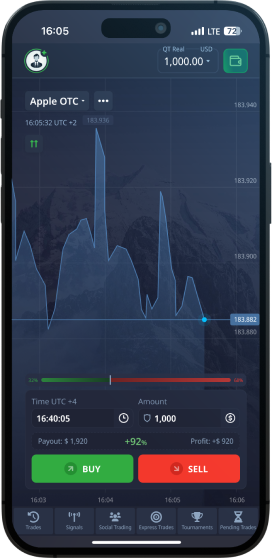
In the evolving world of online trading, finding the right tools and strategies can make or break your success. This is where indicators come into play. If you’re looking to maximize your trading potential with the pocket option best indicator pocket option best indicator, understanding the various options available and how they can be used effectively is essential. In this article, we will delve into the best indicators for Pocket Option, how they work, and strategies for integrating them into your trading approach.
Understanding Trading Indicators
Trading indicators are mathematical calculations based on the price, volume, or open interest of a security. They are typically displayed as lines on a chart, and they can help traders identify trends, reversals, and potential entry and exit points. The use of these indicators can significantly enhance decision-making processes in trading.
There are various types of indicators, including trend indicators, momentum indicators, volatility indicators, and volume indicators. Each of these categories serves a specific purpose and can be used in different trading strategies.
Types of Indicators for Pocket Option
1. **Moving Averages (MA)**
Moving Averages are among the most popular indicators used by traders. They smooth out price fluctuations and help to identify the direction of the trend. There are two main types: Simple Moving Average (SMA) and Exponential Moving Average (EMA).
– **SMA** provides a straightforward average of prices over a specified period, which can help identify the overall trend.
– **EMA**, on the other hand, gives more weight to recent prices, making it more responsive to changes in the market.
Using Moving Averages in conjunction with other indicators can help confirm trends and reduce false signals.
2. **Relative Strength Index (RSI)**
The RSI is a momentum oscillator that measures the speed and change of price movements. It ranges from 0 to 100 and is typically used to identify overbought or oversold conditions in a market.
– An RSI above 70 indicates that a market may be overbought, while an RSI below 30 suggests that it may be oversold.
This indicator is particularly useful for identifying potential reversal points in the market.
3. **Bollinger Bands**
Bollinger Bands consist of a middle band (SMA) and two outer bands that are standard deviations away from the SMA. This indicator helps traders visualize volatility and market conditions.
– When the bands tighten, it indicates low volatility and potential price consolidation. Conversely, when the bands widen, it suggests increased volatility and potential trend movement.
Traders often use Bollinger Bands to identify breakouts and reversals in the market.
4. **MACD (Moving Average Convergence Divergence)**
MACD is a trend-following momentum indicator that shows the relationship between two moving averages of a security’s price. It consists of the MACD line, the Signal line, and the histogram.
– When the MACD line crosses above the Signal line, it generates a bullish signal, while a crossover below produces a bearish signal.
This indicator helps traders to identify the strength and direction of a trend, making it a favorite among traders of Pocket Option.
5. **Stochastic Oscillator**
This momentum indicator compares a particular closing price of a security to a range of its prices over a specific period. It generates values between 0 and 100, similar to the RSI.

– An oscillator reading above 80 indicates overbought conditions, while a reading below 20 indicates oversold conditions.
The Stochastic Oscillator is effective for identifying potential reversal points when combined with other indicators.
Choosing the Best Indicators for Your Trading Strategy
When it comes to selecting the best indicators, it’s essential to consider your personal trading style, risk tolerance, and preferences. Here are some tips for choosing the right indicators for your Pocket Option trading strategy:
1. **Understand Market Conditions**
Different indicators perform better under different market conditions (trending vs. ranging markets). Ensure that the indicators you choose align with the current market environment.
2. **Combine Indicators Wisely**
Using a combination of indicators can provide confirmation and reduce the likelihood of false signals. For example, using an RSI with a Moving Average can offer a more comprehensive view of market conditions.
3. **Backtesting**
Always backtest your strategy using historical data before applying it in live trading. This will help you understand how effective your indicators are and allow you to refine your approach accordingly.
4. **Stay Updated with Market News**
Even the best indicators cannot predict sudden market changes triggered by news events or global economic shifts. Staying informed will help you make better trading decisions alongside your indicators.
Integrating Indicators into Your Trading Strategy
Once you have chosen your indicators, it’s time to integrate them into your trading strategy. Here’s how to do it effectively:
1. **Define Entry and Exit Points**
Use your indicators to establish clear rules for entering and exiting trades. For instance, you can enter a trade when the RSI indicates oversold conditions and exit when the Moving Average signals a trend reversal.
2. **Risk Management**
Implement a solid risk management plan alongside your indicators. This includes setting stop-loss orders and determining position sizes that align with your risk tolerance.
3. **Keep a Trading Journal**
Document your trades, including your reasoning for entering and exiting based on your indicators. This will help you analyze your performance and make adjustments to your strategy as needed.
4. **Continuous Learning**
The financial markets are ever-evolving, and continuous education is crucial. Keep learning about new indicators, trading strategies, and market trends to stay ahead.
Conclusion
In conclusion, selecting the right indicators for your Pocket Option trading endeavors is a critical step towards maximizing your trading success. By understanding different types of indicators such as Moving Averages, RSI, Bollinger Bands, MACD, and the Stochastic Oscillator, you can make informed trading decisions. Remember to blend indicators within your strategy, continuously adapt to market conditions, and practice effective risk management. Armed with the right tools and knowledge, you can significantly enhance your trading performance on Pocket Option.
